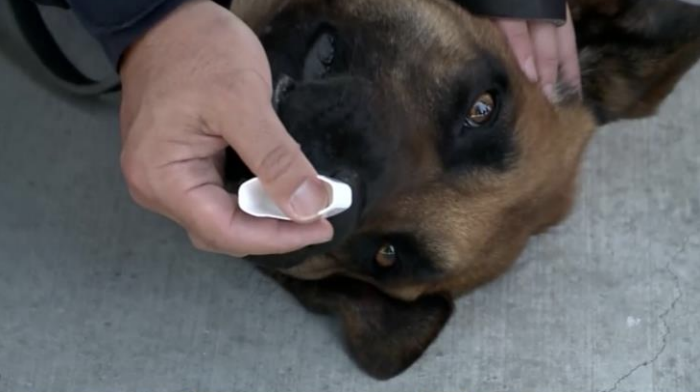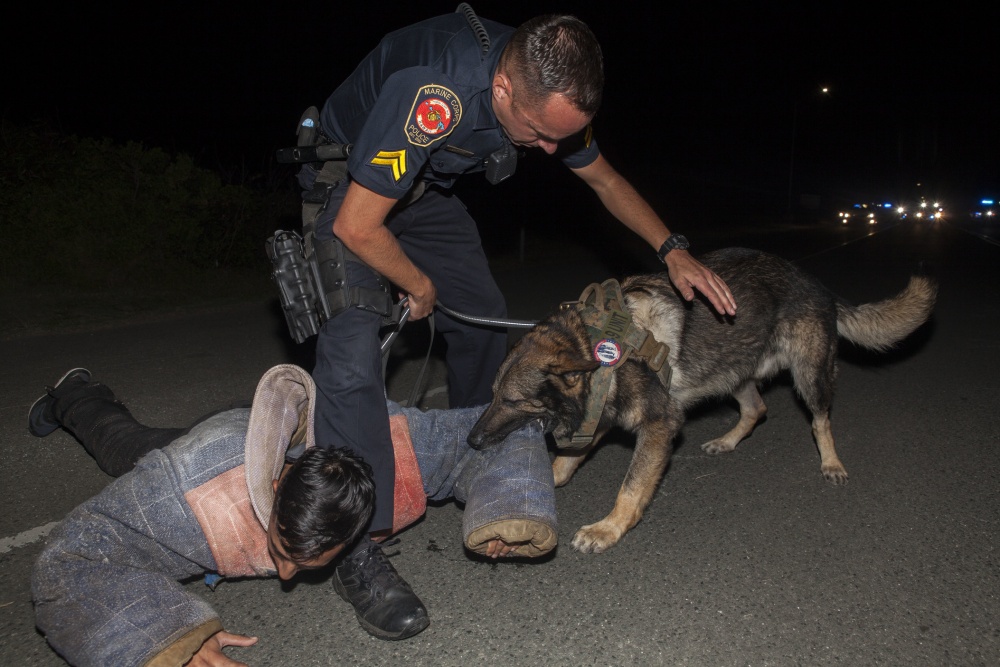Washington State has advanced a bill to train drug-sniffing dogs to detect fentanyl—and limit police liability in civil lawsuits over damages that result.
After failing to make it out of the House Rules Committee in 2023, House Bill 1635 was approved on January 31, by a unanimous 97-0. If the companion bill passes through the Senate, the Washington Criminal Justice Training Commission would be expected to have training and certification standards in place by December 1. Officer immunity from civil damages would take effect on January 1, 2025.
While K-9 dogs have been trained to sniff an evolving roster of banned substances from synthetic cannabinoids to contraband prison cell phones, only in the past year or so have police departments seriously broached the idea of training them to sniffing for fentanyl. Washington State, and most jurisdictions around the country, currently have no such K-9 units trained to do so.
The term “officer-involved shooting” has become fairly well-recognized as a tool used by law enforcement to obscure incidents of excessive force, often against people who were unarmed and trying to run away. Similarly, the benign-sounding “K-9 apprehension” is another way of saying that someone was mauled by a dog.
Police wouldn’t be liable if a K-9 bit someone wearing a fentanyl patch prescribed cancer pain.
Police dogs apprehend suspects by biting their arm or leg and not letting go, often for minutes at a time. They’re trained to bite hard, and can exert about twice the force as an average dog. Because of this, wounds resulting from K-9 apprehensions are prone to infections and long-term complications. And yet, they’re usually dismissed as superficial injuries when lawsuits are filed over use of excessive force.
The proposed HB 1635 stipulates that law enforcement won’t be liable if someone sues for civil damages provided the dog is appropriately trained and certified; handled by a law enforcement officer acting within the scope of their duties; and “the damages do not arise from gross negligence or willful or wanton misconduct.”
In a state document describing expenditures related to the bill, the Washington State Department of Corrections already slightly loosened those parameters, phrasing immunity from civil liability as applying when neither gross negligence not misconduct “are observed.”

Trained as intended, the dogs will only key onto fentanyl in larger quantities than could be legally possessed. But because things don’t always go according to plan, police would receive immunity in certain circumstances. For example, if a K-9 dog apprehended someone wearing a doctor-prescribed transdermal fentanyl patch to manage cancer pain.
“There is a pharmaceutical form of fentanyl currently available, which is sometimes used by people who have gone through cancer treatments,” states the House Bill Report. “As such, a canine handler that detects fentanyl in that instance should be immune from liability as long as the handler is acting in good faith within the scope of his or her job.”
The theatrical vigilance with which police officers regard fentanyl is a large part of why we’re only just now seeing the first fentanyl-detecting dogs. HB 1635 describes how “officers have collapsed simply from inhaling aerosolized fentanyl,” referencing the widely debunked myth that you can overdose from passive exposure to fentanyl particles in the air or on your skin.
A K-9 dog wouldn’t be at risk of overdose from the scent of fentanyl wafting into their nose, but as HB 1635 or similar legislation begins to proliferate we can inevitably expect reports of police heroically administering Narcan to dogs. There’s already a weird little cottage industry for fentanyl-proof doggy masks and guidelines for dosing naloxone with both generic naloxone and nasal spray Narcan. The generic, intramuscular naloxone is a much more humane way to revive people who use opioids than intranasal Narcan, and that’s never been a good enough reason for cops to carry it. Dogs, however, seem to be worth the trouble.
Top photograph via United States Department of Defense. Inset photograph via Montgomery County Department of Public Safety.





Show Comments